Lost In Random: The Eternal Die Review - Roguelite Sequel Has Its Charms
Mostly good fortune.
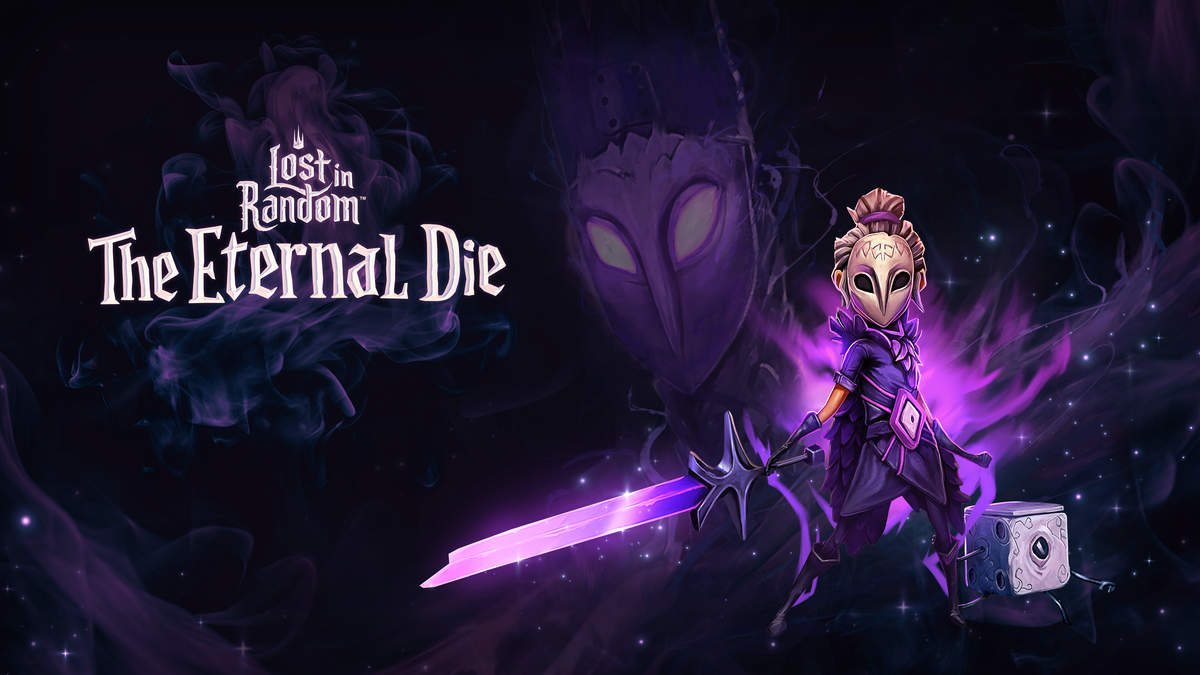
When I heard Lost in Random was getting a sequel, I was conflicted.
Zoink's gothic action-adventure fairy tale ended well and while Lost in Random left room to go further, I was content. Stormteller Games choosing an action roguelite spin-off didn't exactly convince me either, though I've come around to the idea more now that I've played it. Lost in Random: The Eternal Die is a smaller-scale sequel that delivers a satisfying follow-up, though it leans into Supergiant Games' Hades a little too much.
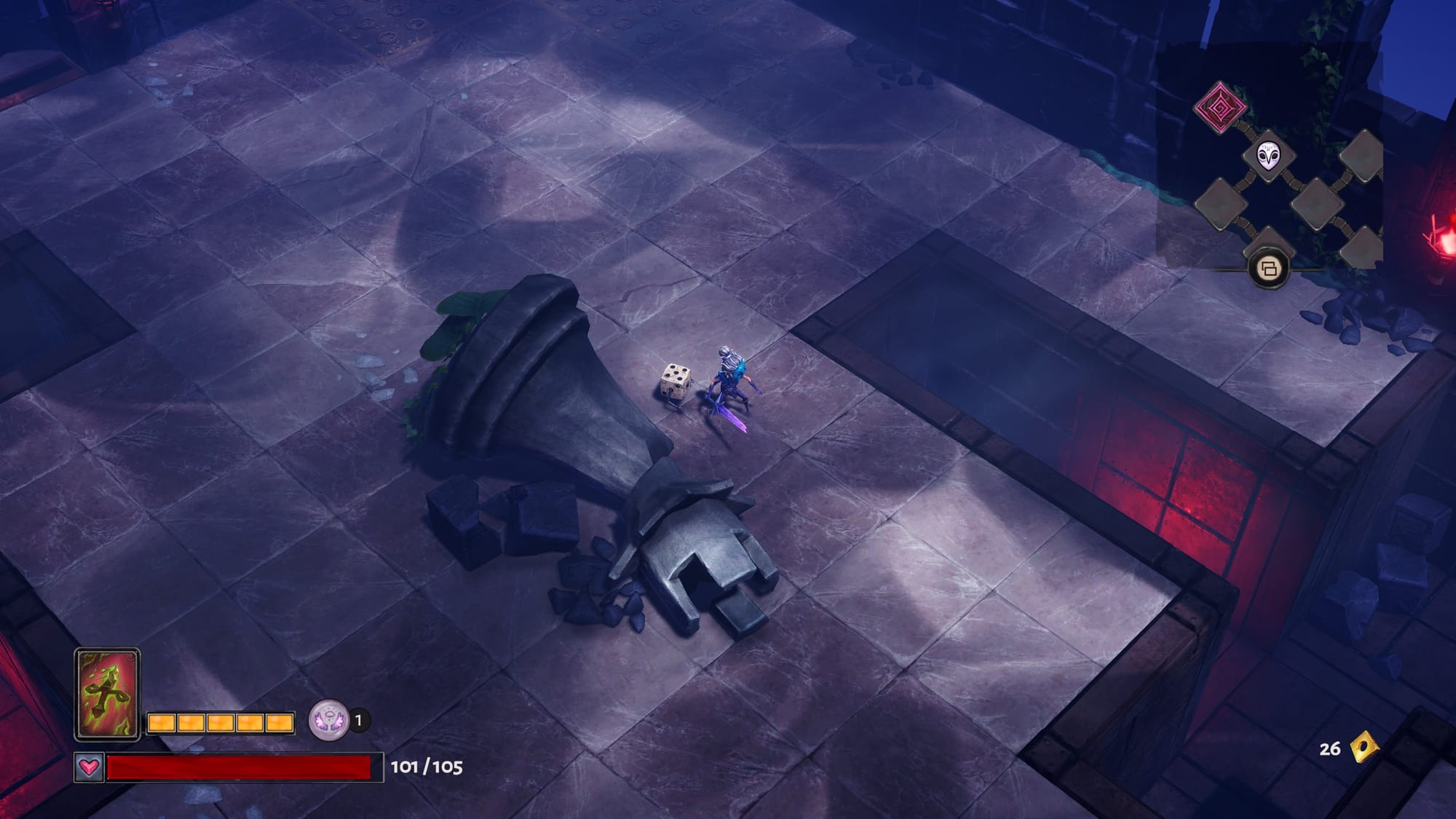
Rather than continuing Even and Odd's story, Lost in Random: The Eternal Die intriguingly focuses on our former villain, Queen Aleksandra. Lost in Random's ending laid the foundations for a redemption arc, and the sequel walks that path with surprising grace, though it's not especially newcomer friendly. Stormteller doesn't gloss over her wrongdoings, presenting a flawed but compelling character trying to make amends while providing welcome insights into her past.
This time around, we're no longer in Random. Aleksandra's trapped inside a separate realm run by a nightmarish being called Mare, who never leaves much of an impression beyond filling the need for Evil™. Aleksandra's been transformed back into a child, so she's no longer the fear-inspiring Queen we once knew. She's also lost much of her power, and we'll need to slowly regain it to escape.
Accompanied by a die known as Fortune, what follows is a serviceable structure where our goal is to eventually defeat Mare and leave, also securing a brighter future for the trapped inhabitants of your new base, Sanctuary. Some citizens were previously wronged by Aleksandra, who are perhaps more accepting that she's here than you'd expect. Others are just happy for the help. Either way, Sanctuary is where we'll end up every time we "die."
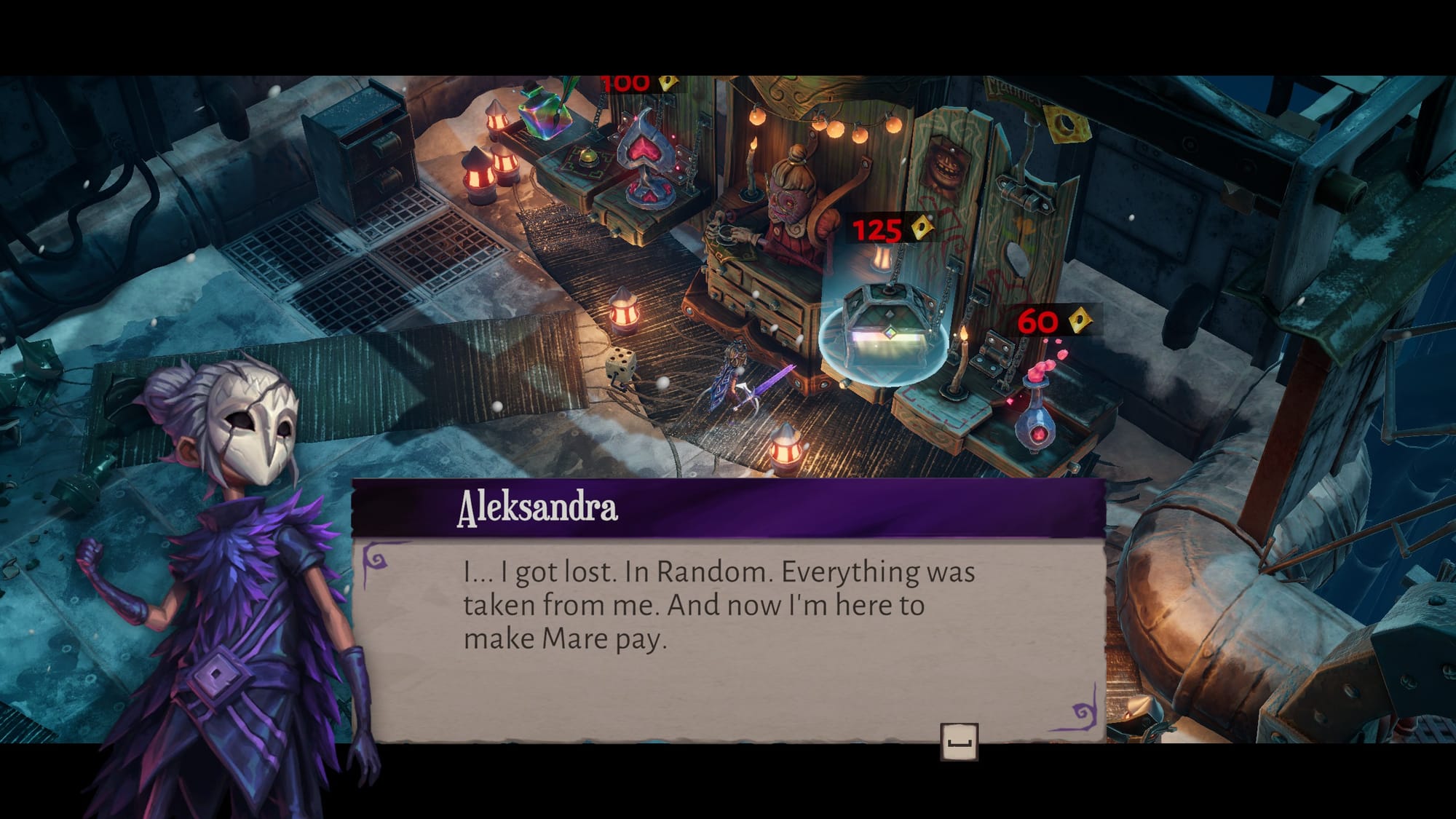
Adopting a more traditional roguelite approach, Lost in Random: The Eternal Die splits each run into four zones that don't sport the most catchy environmental themes. We're in a Burtonesque world, and you're giving us generic castles and swamps? It's a shame considering how much character Random had in the original game, and this aspect feels like wasted potential.
Each biome is one massive procedurally generated floor split across different rooms, each packed with decent variety. One minute, we could be fighting birds or buying supplies from a merchant, the next we could be playing a board game to win potential prizes or reminiscing about a childhood memory. This keeps exploration interesting, and each floor is (usually) capped off by a boss fight after finding the exit.
There's no lack of enemies as you explore, and Aleksandra has four unlockable weapons - a sword, bow and arrow, spear, and a warhammer. The Eternal Die's combat has decent depth with some enjoyable nuances. Beyond your basic and charged attacks, Fortune can be thrown at enemies from range, fittingly dealing damage based on what side he lands on. Cards grant useful abilities like stunning enemies or summoning flames that target your closest foe, too.
What's more appealing is the temporary boosts earned through the 'Relics' system, which is effectively The Eternal Die's equivalent of Boons. These boosts add a pleasing strategic layer to combat, like inflicting burn after using a charged attack or doing more damage to shielded foes. That's only helped by a colour system, where matching three colours across these Relics grants useful stat boosts like greater weapon damage.
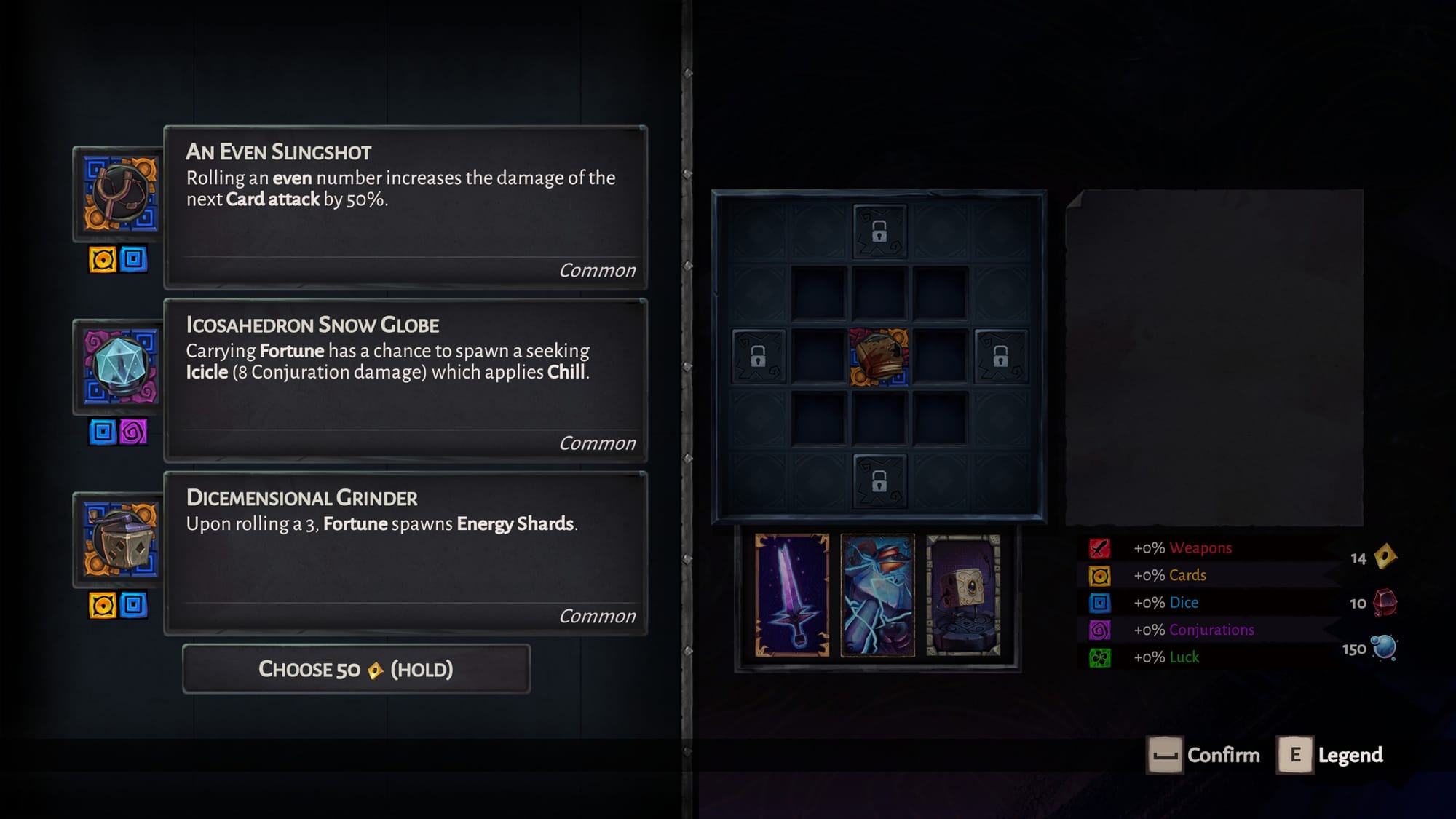
Beating Mare on the first try is not something I achieved, and you will likely die a lot, but "dying" is necessary to advance the story. It's this gameplay structure that highlights how much influence it takes from Hades, and you will gradually unlock more services for boosting Aleksandra's power. Progression systems often mirror those in Supergiant's hit, like how 'Blessings' can improve your max health, starting gold, revive you after dying and more. Weapons can be upgraded as well.
That's before we discuss the 'Sigil of Misfortune.' Once Mare's been defeated, activating a sigil gradually ups the difficulty with harder bosses, which is basically the Pacts of Punishment without the same degree of starting choice in your debuffs. However, you can find 'Corrupted Decrees' as you go along, such as reduced healing from elixirs or causing enemies to explode when they die. This provides a nice option for challenge seekers, but it's not subtle.
Minor spoilers in the next paragraph, which ends after the screenshot.
This isn't a roguelite where you need to defeat the final boss multiple times, once is enough. That said, there are multiple endings determined by how much you've helped everyone else, and reaching the best one took me 10 hours. Do you leave immediately and only think of yourself? Or do you help each inhabitant find their seed of hope again by clearing set goals, such as finding a set number of dicelings? Ultimately, it's your call.
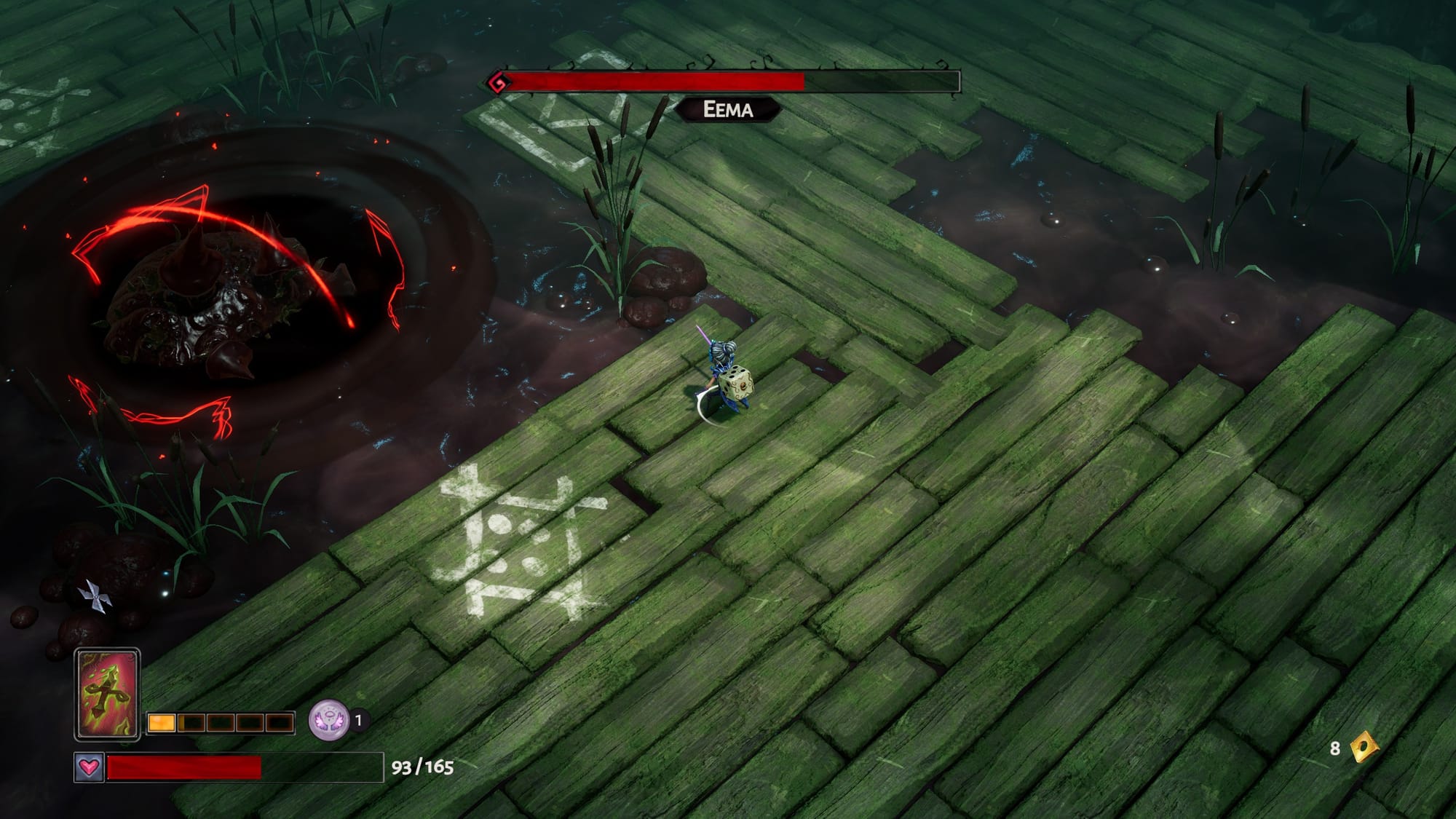
This is a good approach, though I would have been much more incentivised to complete everyone's goals if half the characters weren't so one-dimensional. Most of Sanctuary's inhabitants don't get much character development at all, with only one or maybe two major exceptions, and that's a real shame.
Returning to this series once more is certainly a delight, and Lost in Random: The Eternal Die has me considerably invested. Much of the game's design is derivative of Hades, not always to its detriment, but that lack of originality ultimately hurts this smaller sequel spin-off. Still, Queen Aleksandra's redemptive tale left me wanting to learn what happens next, and if you're after a new roguelite to chew on, the fundamentals are solid enough.
7/10
Lost in Random: The Eternal Die was reviewed on PC, and a review code was provided by the publisher. It's out on June 17 on PS5, Switch, and Xbox Series X/S.
Rewinder uses a 10-point scoring scale in our reviews, and we've detailed our review scoring policy here for more information.
PC Specs Used
My desktop uses an Intel i9 16-Core Processor i9-12900 (Up to 5.1GHz), 32GB RAM - Corsair VENGEANCE DDR5 5200MHz, and a 16GB Nvidia GeForce RTX 4070 Ti Super. I encountered no problems on the highest settings.
Beyond some longer loading times, I also found no issues on my 512GB Steam Deck (original model) and everything ran smoothly.


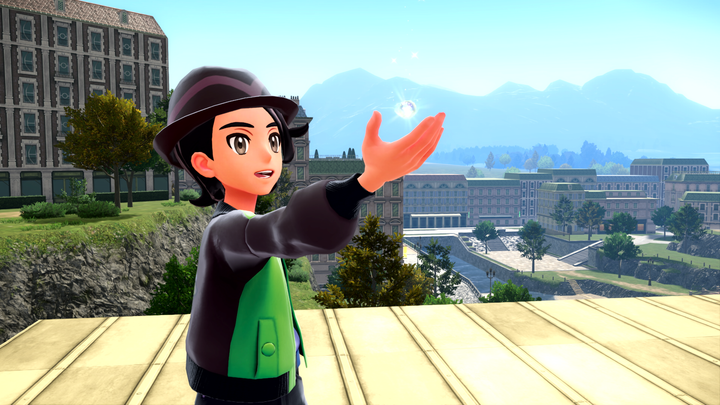

Comments ()